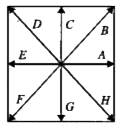ABCDE is a pentagon. Prove that the resultant of forces −−→AB,−−→AE,−−→BC,−−→DC,−−→EDand−−→AC is 3−−→AC.
Step by step video & image solution for ABCDE is a pentagon. Prove that the resultant of forces vec (AB), vec(AE), vec(BC), vec(DC), vec(ED) and vec(AC) is 3vec(AC). by Maths experts to help you in doubts & scoring excellent marks in Class 12 exams.
Updated on:21/07/2023Topper's Solved these Questions
- VECTOR ALGEBRABOOK - ARIHANT MATHS ENGLISHCHAPTER - VECTOR ALGEBRAEXERCISE - Exercise For Session 3
11 Videos
- VECTOR ALGEBRABOOK - ARIHANT MATHS ENGLISHCHAPTER - VECTOR ALGEBRAEXERCISE - VECTOR ALGEBRA EXERCISES 1: Single Option Correct Type Questions
1 Videos
- VECTOR ALGEBRABOOK - ARIHANT MATHS ENGLISHCHAPTER - VECTOR ALGEBRAEXERCISE - Exercise For Session 1
7 Videos
- TRIGONOMETRIC FUNCTIONS AND IDENTITIESBOOK - ARIHANT MATHS ENGLISHCHAPTER - TRIGONOMETRIC FUNCTIONS AND IDENTITIESEXERCISE - Exercise (Questions Asked In Previous 13 Years Exam)
19 Videos
Similar Questions
Knowledge Check
If ABCD is a rhombus whose diagonals intersect at E, then −−→EA+−−→EB+−−→EC+−−→ED equals
A→0B−−→ADC2−−→BCD2−−→AD
Prove that (→A+→B)×(→A−→B)=2(→B×→A)
View SolutionA number of vectors are as shown in .They can be combined in various ways , like →A+→C=→B . What is the value of (a) →E+→C (b) →A+→F (c ) →A+→D (d) →E+→A (e ) →A−→B .

View SolutionIf ABCDEF is a regular hexagon, prove that −−→AC+−−→AD+−−→EA+−−→FA=3−−→AB
View SolutionIn a regular hexagon ABCDEF, prove that −−→AB+−−→AC+−−→AD+−−→AE+−−→AF=3−−→AD
View SolutionProve that 3−−→OD+−−→DA+−−→DB+−−→DC is equal to −−→OA+−−→OB+−−→OC.
View SolutionProve that →a.{(→b+→c)×(→a+2→b+3→c)}=[→a→b→c].
View SolutionABCDE is pentagon, prove that →AB+→AE+→BC+→DC+→ED+→AC=3→AC
View Solution
